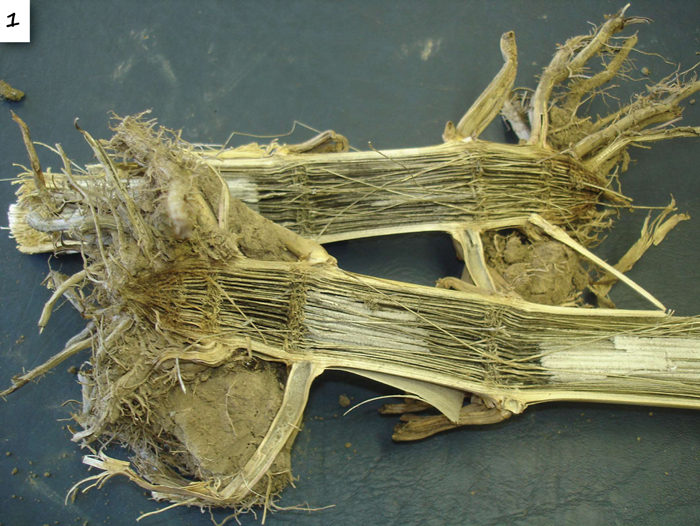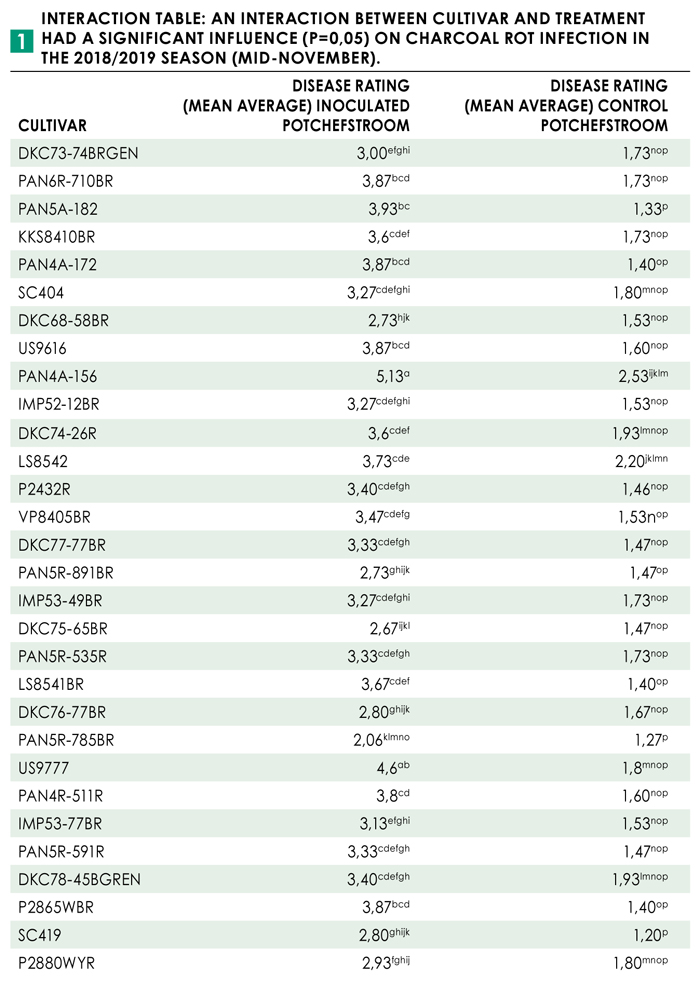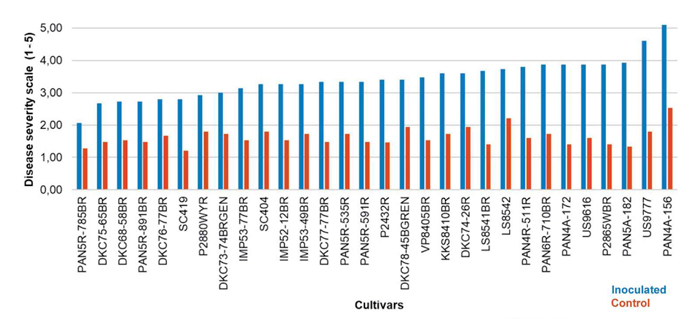
van Rensburg
ARC-Grain Crops,
Potchefstroom
Charcoal stalk rot is caused by the fungus Macrophomina phaseolina and is favoured by soil temperatures of 30°C to 42°C and low soil moisture. Initial symptoms in maize can be observed after flowering with the abnormal drying of upper leaf tissues, stalk lodging and premature death.
When plants approach maturity, the lower stalk nodes (usually limited to the first five nodes) show a typical charcoal, grey-black discolouration. When the stalk is cut open, numerous black specks (microsclerotia) are visible in the shredded vascular bundles and on the inside of the stalk (see Photo 1).

The charcoal rot pathogen (fungus) has a broad host range that includes soybean, sunflower, sorghum, maize, tobacco and a range of vegetable crops – making crop rotation ineffective as a management tool. The most effective and environmentally friendly management option remains the use of cultivars with resistance against charcoal rot.
Resistance screening
Since no information was available regarding the resistance of commercial cultivars against charcoal stalk rot, 30 commercial maize cultivars were screened for resistance in a project funded by the Maize Trust in 2018/2019.
The 30 cultivars were selected from the national cultivar trials and planted in a field trial in Potchefstroom, with three replications. Maize stalks were inoculated with M. phaseolina-infected toothpicks and the controls were inoculated with clean, sterilised toothpicks.
To conduct disease ratings of the stalks from the individual cultivars, the stalks were split open and the lesion size captured according to a disease severity scale (Shekhar & Kumar, 2012). Cultivar disease scores in this study ranged from 1 to 5 where a score of 1 indicates a healthy stalk or slightly discoloured stalk at the site of inoculation. A score of 2, 3 or 4 means that up to 50%, 51% – 75% and 76% – 100%, respectively, of the inoculated internode is discoloured. A score of 5 means that 100% of the inoculated internode is discoloured with less than 50% of the adjacent internode.
Results
The data was analysed by Mrs Nicolene Cochrane (ARC-Biometry Services), using a split-plot Anova with cultivars as main treatments and treatments (inoculated and control) as sub-plots. From the Anova analyses, cultivar and treatment as main factors had a highly significant effect on charcoal rot infection.
The charcoal rot-infected toothpick-inoculated plants had a mean disease score of 3,41 and the controls (clean, sterilised toothpicks) had a mean disease score of 1,63. The cultivar with the highest mean average disease score was PAN4A-156 (3,88) and the lowest mean average disease score was recorded for PAN5R-785BR (1,67).
The data showed that a significant (P=0,05) interaction (Table 1) between cultivar and treatment had an effect on charcoal rot infections, with PAN4A-156 (charcoal rot-infected toothpick method) having the highest mean average score of 5,13 and the lowest mean average score (charcoal rot-infected toothpick method) was recorded for cultivar PAN5R-785BR (2,06).
 Mean average charcoal rot scores for the controls were lower compared to the charcoal rot-infected toothpick method (Graph 1). M. phaseolina resistance information generated can now assist producers with cultivar choices for the management of charcoal stalk rot.
Mean average charcoal rot scores for the controls were lower compared to the charcoal rot-infected toothpick method (Graph 1). M. phaseolina resistance information generated can now assist producers with cultivar choices for the management of charcoal stalk rot.

 References
References
- Shekhar M & Kumar S, 2012. Inoculation methods and disease rating scales for maize diseases. Directorate of maize research. Indian Council of Agricultural Research. Pusa Campus, New Delhi, India.

















